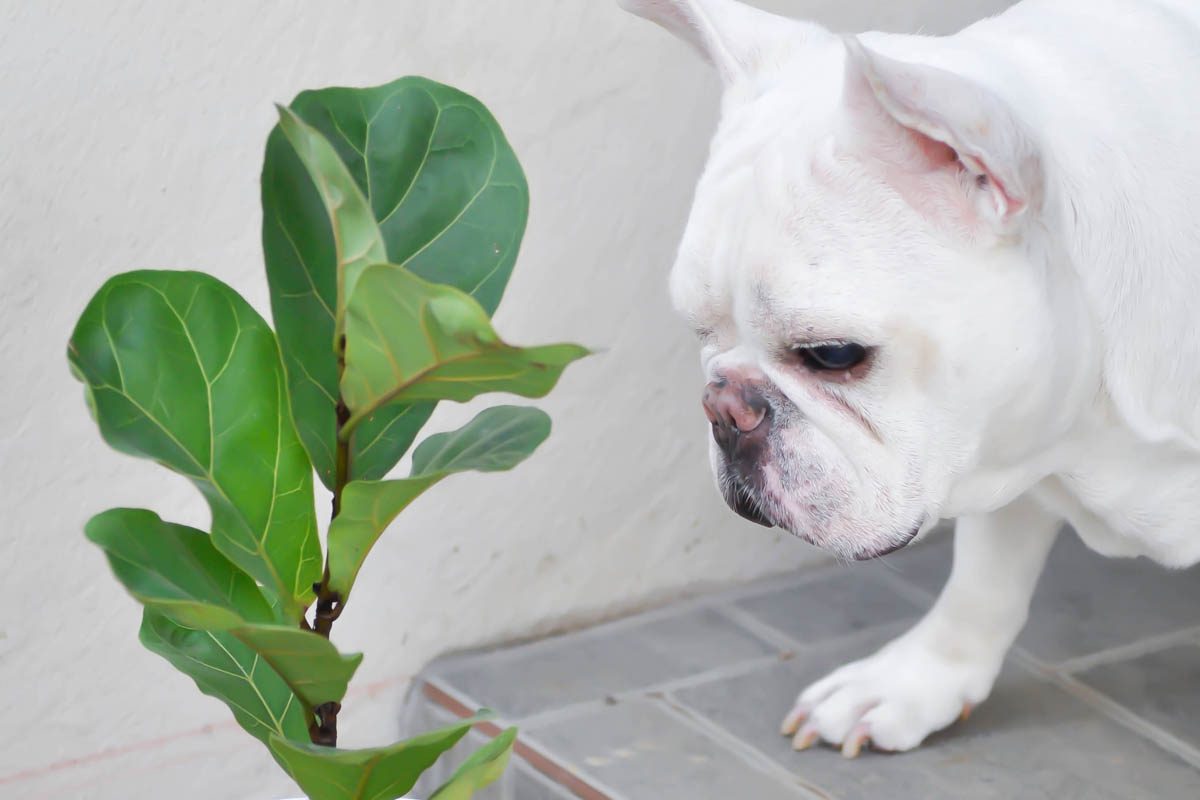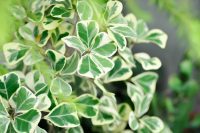Fiddle-leaf fig (Ficus lyrata) is toxic to dogs. The toxic principles are ficin and ficusin, which are present in the milky sap. This causes ocular, oral, dermal and gastrointestinal irritation. There are unverified reports that fiddle-leaf fig also contains insoluble calcium oxalate crystals, however, there are no verified sources and it appears more likely that writers are confusing fiddle-leaf fig (Ficus lyrata) with fiddleleaf philodendron (Philodendron bipennifolium), which does contain insoluble calcium oxalate crystals.
What is fiddle-leaf fig?
| Family | Moraceae |
| Botanical name | Ficus lyrata |
| Common names | Fiddle-leaf fig, Banjo fig |
| Toxicity | Toxic to dogs |
| Toxic parts | All parts |
| Toxic principle | Ficin and ficusin |
| Severity | Moderate |
Fiddle-leaf fig is an evergreen tree native to western Africa. The fiddle-leaf fig has become a popular houseplant for its broad, green violin(fiddle)-shaped leaves which add an architectural look to any home.
Related: Is ficus toxic to dogs?
Toxic principles
Fiddle-leaf fig contains ficin, a proteolytic enzyme, and ficusin, a psoralen in the latex sap of the plant. Damage to the plant from chewing will release the milky sap as well as gastrointestinal distress.
The University of California rates the fiddle-leaf fig as four in regards to toxicity. “The juice, sap, or thorns of these plants may cause a skin rash or irritation. The rashes may be very serious and painful.”
The irritating nature of the sap is usually enough for dogs to stop chewing fiddle-leaf fig.
Clinical signs of fiddle-leaf fig toxicity
Symptoms of fiddle-head poisoning can vary depending on the route of exposure.
Ingestion
- Oral pain
- Loss of appetite
- Drooling
- Vomiting
- Mild diarrhea
Dermal
- Redness
- Blisters
Ocular
- Squinting
- Ocular pain
First aid
- Remove any remaining plant matter from the mouth if it is safe to do so and offer the dog a drink of something tasty such as milk.
- Wash off any sap on the coat with warm water and dog shampoo, or dishwashing liquid (Dawn, Fairy Liquid, Morning Fresh).
Contact your veterinarian or pet poison helpline for advice, they may recommend a wait-and-see approach, or decide the dog should be brought in for evaluation and treatment.
Treatment
There is no antidote for fiddle-leaf toxicity and treatment is aimed at preventing further absorption as well as managing clinical signs.
If the coat has been contaminated, the veterinarian will give the dog a bath to remove any remaining sap. Ocular eye washes will be used to rinse the eye of any sap.
Dogs who have recently consumed fiddle-leaf fig can be given medications to induce vomiting, followed by activated charcoal which binds to any remaining plant matter.
Antiemetics can be administered to dogs who are experiencing vomiting, and intravenous fluids can prevent or treat dehydration and electrolyte derangements.
Dogs who have had gastrointestinal upset may be placed on a bland diet for the following few days to allow the GI tract to recover.
Prognosis
The prognosis for fiddle-leaf ingestion is excellent and most dogs will make a full recovery.
Prevention
The only way to eliminate the risk is to not keep it in homes with dogs. However, some plant lovers may choose to keep their plant and dog in which case, the plant should be kept in a room the dog cannot access if he or she is showing an interest in chewing it. There are plenty of non-toxic plants for dog lovers to choose from.
Julia is a writer and landscape consultant from Wollongong with a love of horticulture. She had been an avid gardener for over 30 years, collects rare variegated plants and is a home orchardist. Julia is passionate about learning and sharing her knowledge of plant propagation and plant toxicology. Whether it’s giving advice on landscape projects or sharing tips on growing, Julia enjoys helping people make their gardens flourish.




